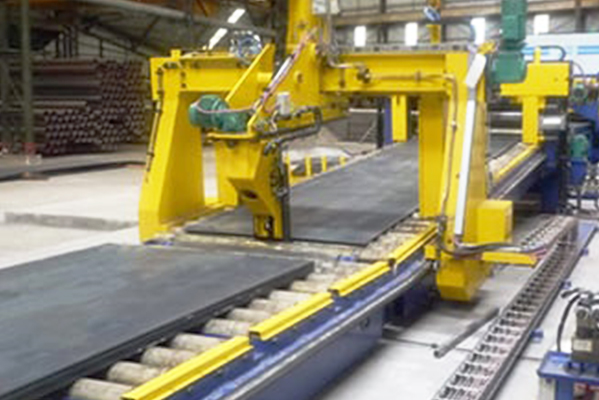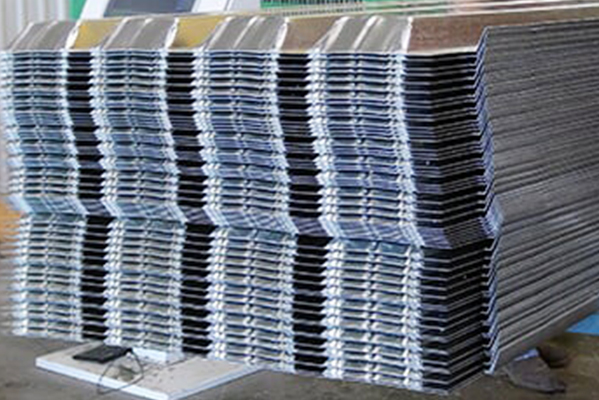Navigation Menu
Contact Us
- Email:
- info@wxavatar.com
- Address:
- Yurong Village, Yuqi Street, Huishan District, Wuxi, China.
Release Date:Mar 24, 2025 Visit:52 Source:Roll Forming Machine Factory
In the modern manufacturing and logistics industries, efficiency, space optimization, and cost-effectiveness are critical factors for success. Stacking packaging equipment plays a vital role in achieving these goals by automating the process of organizing and arranging products or packages into stable, space-efficient stacks. This article explores the purpose of stacking packaging equipment, its benefits, and its applications across various industries.
1. Space Optimization
One of the primary purposes of stacking packaging equipment is to maximize the use of available space. In warehouses, storage facilities, and during transportation, space is often limited and expensive. Stacking equipment ensures that products are arranged in a way that minimizes wasted space, allowing more items to be stored or transported in the same area. This is particularly important for industries dealing with large volumes of goods, such as food and beverage, pharmaceuticals, and consumer goods.
2. Improved Efficiency
Stacking packaging equipment automates the process of arranging products into stacks, significantly reducing the time and labor required compared to manual stacking. This automation not only speeds up the packaging process but also ensures consistency and precision, which can be challenging to achieve with human labor. As a result, production lines can operate more efficiently, meeting higher output demands without compromising quality.

3. Enhanced Stability and Safety
Properly stacked products are less likely to shift or topple during storage or transportation, reducing the risk of damage. Stacking equipment is designed to create stable, uniform stacks that can withstand movement and vibrations. This is especially important for fragile or high-value items, where even minor damage can lead to significant losses. Additionally, automated stacking reduces the risk of workplace injuries associated with manual handling of heavy or bulky items.
4. Cost Savings
By optimizing space and improving efficiency, stacking packaging equipment helps businesses reduce operational costs. Fewer storage and transportation units are needed, and labor costs are minimized due to automation. Furthermore, the reduction in product damage translates to lower losses and higher profitability. Over time, these savings can offset the initial investment in stacking equipment, making it a cost-effective solution for many businesses.
5. Versatility Across Industries
Stacking packaging equipment is highly versatile and can be adapted to various industries and product types. For example:
Food and Beverage: Stacking equipment is used to arrange bottles, cans, and boxes into stable pallets for storage and shipping.
Pharmaceuticals: Precise stacking ensures that delicate medical products are securely packaged and transported.
E-commerce: With the rise of online shopping, stacking equipment helps manage the high volume of packages efficiently.
Construction: Heavy materials like bricks or tiles can be stacked securely for transport to construction sites.
6. Sustainability
Efficient stacking reduces the need for excess packaging materials and minimizes the carbon footprint associated with transportation. By optimizing space, fewer trips are required to transport goods, leading to lower fuel consumption and reduced greenhouse gas emissions. This aligns with the growing demand for sustainable practices in manufacturing and logistics.

7. Customization and Scalability
Modern stacking packaging equipment is designed to be customizable and scalable, allowing businesses to tailor the machinery to their specific needs. Whether handling small, lightweight items or large, heavy products, stacking equipment can be adjusted to accommodate different sizes, shapes, and weights. This flexibility ensures that businesses can scale their operations as they grow without needing to invest in entirely new systems.
Conclusion
Stacking packaging equipment is an essential component of modern manufacturing and logistics operations. Its ability to optimize space, improve efficiency, enhance safety, and reduce costs makes it a valuable investment for businesses across various industries. As technology continues to advance, stacking equipment will likely become even more sophisticated, further enhancing its role in streamlining supply chains and supporting sustainable practices. For companies looking to stay competitive in today's fast-paced market, integrating stacking packaging equipment into their operations is a strategic move that delivers long-term benefits.